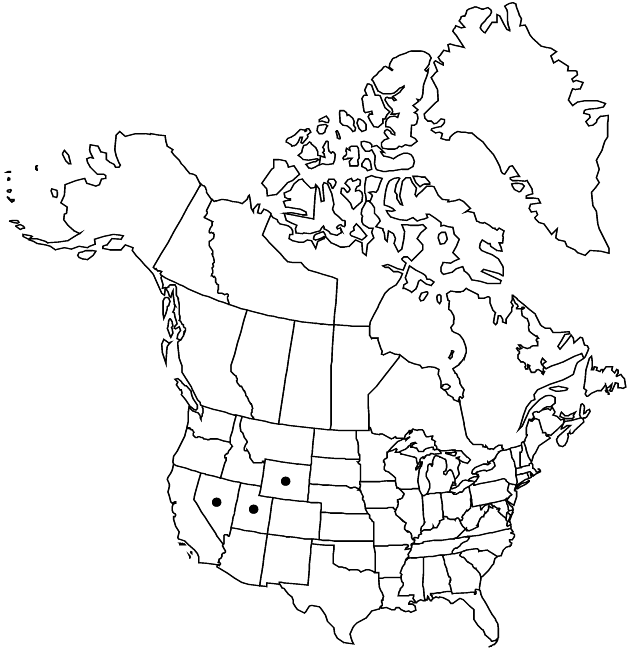Difference between revisions of "Tetradymia nuttallii"
Fl. N. Amer. 2: 447. 1843.
Endemic
imported>Volume Importer |
imported>Volume Importer |
||
| Line 49: | Line 49: | ||
|publication year=1843 | |publication year=1843 | ||
|special status=Endemic | |special status=Endemic | ||
| − | |source xml=https:// | + | |source xml=https://bitbucket.org/aafc-mbb/fna-data-curation/src/2e0870ddd59836b60bcf96646a41e87ea5a5943a/coarse_grained_fna_xml/V19-20-21/V20_1418.xml |
|tribe=Asteraceae tribe Senecioneae | |tribe=Asteraceae tribe Senecioneae | ||
|genus=Tetradymia | |genus=Tetradymia | ||
Latest revision as of 20:00, 5 November 2020
Shrubs, 10–120 cm. Stems 1–5+, erect, spiny, pannose but for glabrescent streaks. Leaves: primaries forming straight or recurved spines, 5–25 mm; secondaries spatulate, 10–20 mm, tomentose to nearly glabrous. Heads 4–6. Peduncles 2–12 mm. Involucres turbinate to cylindric, 6–9 mm. Phyllaries 4, oblong. Florets 4; corollas bright yellow, 8–10 mm. Cypselae 4–6 mm, densely hirsute; pappi of 75–100 bristles 9–10 mm. 2n = 60.
Phenology: Flowering spring–summer.
Habitat: Rocky or sandy places, sagebrush scrub or shadscale scrub
Elevation: 1300–2100 m
Distribution

Nev., Utah, Wyo.
Discussion
Selected References
None.
Lower Taxa
None.